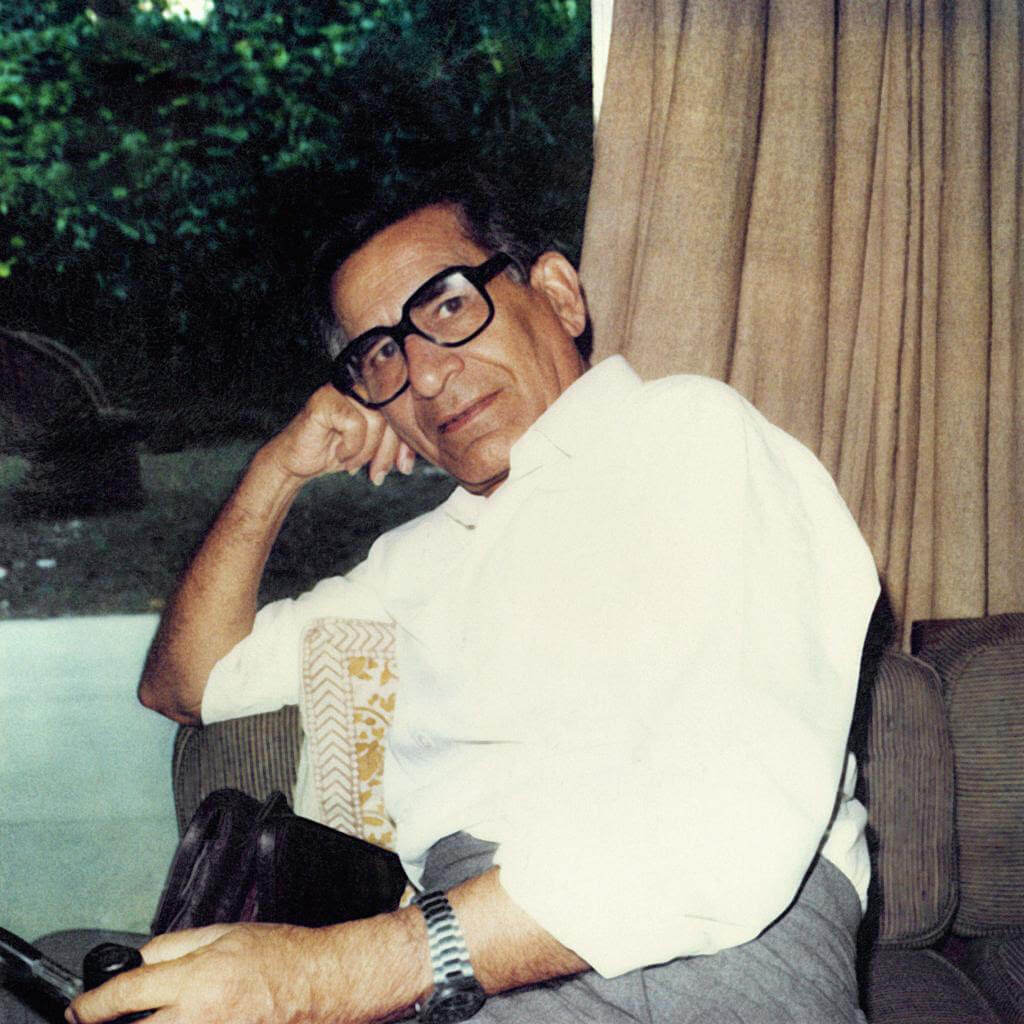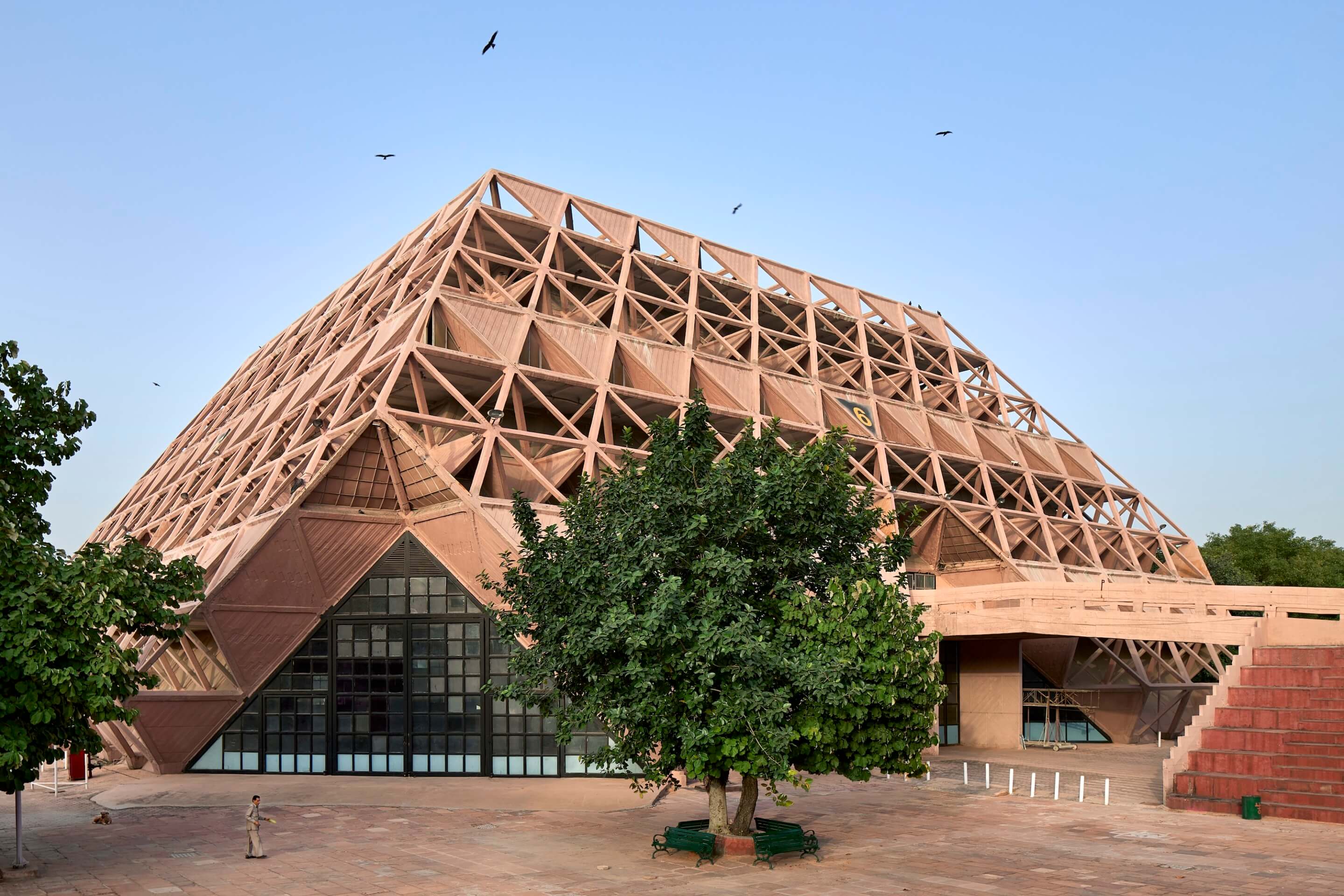Remembering Mahendra Raj, an Indian structural engineer, who died in May
After India won independence from Great Britain in 1947, there was an urgency and idealism to rebuild the resurgent nation into a modern state. The Chandigarh project, designed by Le Corbusier, epitomized that aspiration. It was, at first, the capital of the Indian state of East Punjab, created after the 1947 partition of India; today it is the capital of the states of Punjab and Haryana. The city was to be, as articulated by India’s first prime minister, Jawaharlal Nehru, “unfettered by the traditions of the past [and] the first large expression of our creative genius flowering on our newly earned freedom.”
There were several Indian engineers working behind the scenes to build Le Corbusier’s challenging architectural designs. Mahendra Raj, then a young engineer on the Chandigarh project team, found himself dealing with Le Corbusier’s perplexing forms, governed by a rigid, enigmatic code of “modular dimensions.” This was his initiation and “baptism with fire” into the world of design for concrete structures, for which he later developed a lifelong passion.
Born in Gujranwala in a region that later became part of Pakistan, Raj was educated as an engineer in Lahore before working on Chandigarh. He moved to the United States to pursue a master’s degree in Minnesota and earned an additional postgraduate degree at Columbia University. Afterwards, he remained in New York and joined Ammann & Whitney Consulting Engineers. In 1960, moved back to India to start his own practice, initially in Mumbai and later in Delhi, encouraged by the young Indian architect Charles Correa, who too had just returned from the USA, after studying at MIT.

While American cities like Chicago and New York were building steel skyscrapers throughout the 20th century, Indian modernism was ushered in with more traditionally available and affordable, labor-intensive, mid-rise brick and concrete structures.
In the early 1970s, big-banner architectural competitions were often held to discover talent. One such project was the competition to design the Hall of Nations & Halls of States, won by architect Raj Rewal. It was to be built at the Pragati Maidan in New Delhi for the 1972 International Trade Fair.
The Hall of Nations had a unique structural system of a cast-in-place concrete space frame and was the first ever attempted in India. The huge 72,000-square-foot area inside the clear-span hall—shaped like a giant truncated pyramid—was structurally designed by none other than Mahendra Raj, who, along with Rewal, received great media attention.
Internationally, space frames were usually built in steel. “But since that could not be afforded in India at that time, the alternative was to make it in concrete,” recalled Rewal. This feat was made possible by Raj’s acumen.
Gradually Raj moved to center stage, going on to collaborate with other leading Indian and American architects like Achyut Kanvinde, B. V. Doshi, Correa, and Joseph Allen Stein. He was sought out by skilled architects like Kuldeep Singh and Shiv Nath Prasad, among others, as their novel designs required groundbreaking structural innovations.
Many of the subsequent projects that delineated the skylines of Indian cities—especially Delhi—bore Raj’s stamp through his structural engineering. He wielded quite the magic wand, making the architectural dreams of young Indian designers possible.

Raj Rewal’s subsequent projects like the State Trading Building in New Delhi, with its famous Vierendeel trusses, then a new structural innovation in India, were Mahendra Raj’s work. In the 1980s, other groundbreaking, challenging projects like Singh’s New Delhi Municipal Corporation and Prasad’s Shri Ram Centre and Akbar Hotel were also built in concrete. They all had a strong Corbusian stamp of béton brut Brutalism, thanks to structural engineering by Mahendra Raj.
Raj extensively explored the structural properties of folded slabs in his work with Doshi and Correa. One of his earliest pioneering projects, with Correa, was the Municipal Stadium in Ahmedabad. He later used similar solutions for Doshi’s Tagore Memorial Theatre.
My personal memories of Raj are of a very kind man with utmost humility and a soft spot for mentoring young architects. In 2007, when I was the principal of the Chandigarh College of Architecture, we departed from the usual tradition of inviting iconic architects to deliver the annual Le Corbusier Lecture—instead we invited Mahendra Raj. During the oration he narrated his experience of working on Le Corbusier’s Capitol Complex and shared an unforgettable encounter with the “great master” himself. Raj recalled: “In the early 1950s I was working on the structural design of the Secretariat building that posed a big challenge. It comprised six structural bays with expansion joints between. While the other bays had uniform facades, bay number four had a different pattern, where Corbusier had created a playful variation. The noncontinuous ‘jumping columns’ there defied structural stability.” When the difficulty was explained to Le Corbusier, he was furious! “I had told you to get my French engineers to do it, but you insisted on your Indian team—and now look, they can’t do it!” he told P. L. Varma, the chief engineer of the Chandigarh project. Then the young Mahendra Raj explained the structural complications and suggested a slightly modified alternative that could work. On the next day, Raj was summoned again, but Le Corbusier was all smiles and complimented the young engineer for his brilliance. Le Corbusier modified the facade accordingly, and it stands today as a testament to Raj’s genius.
Le Corbusier, of course, had great respect for engineers. He believed that architects and engineers had a symbiotic relationship—one was incomplete without the other. In the early 1920s, now a century ago, he wrote about the “engineer’s aesthetic” of precision and functional beauty. Mahendra Raj epitomized that sensibility. He was the ideal “architects’ engineer.”
Rajnish Wattas, former principal of the Chandigarh College of Architecture, is an author and critic.

